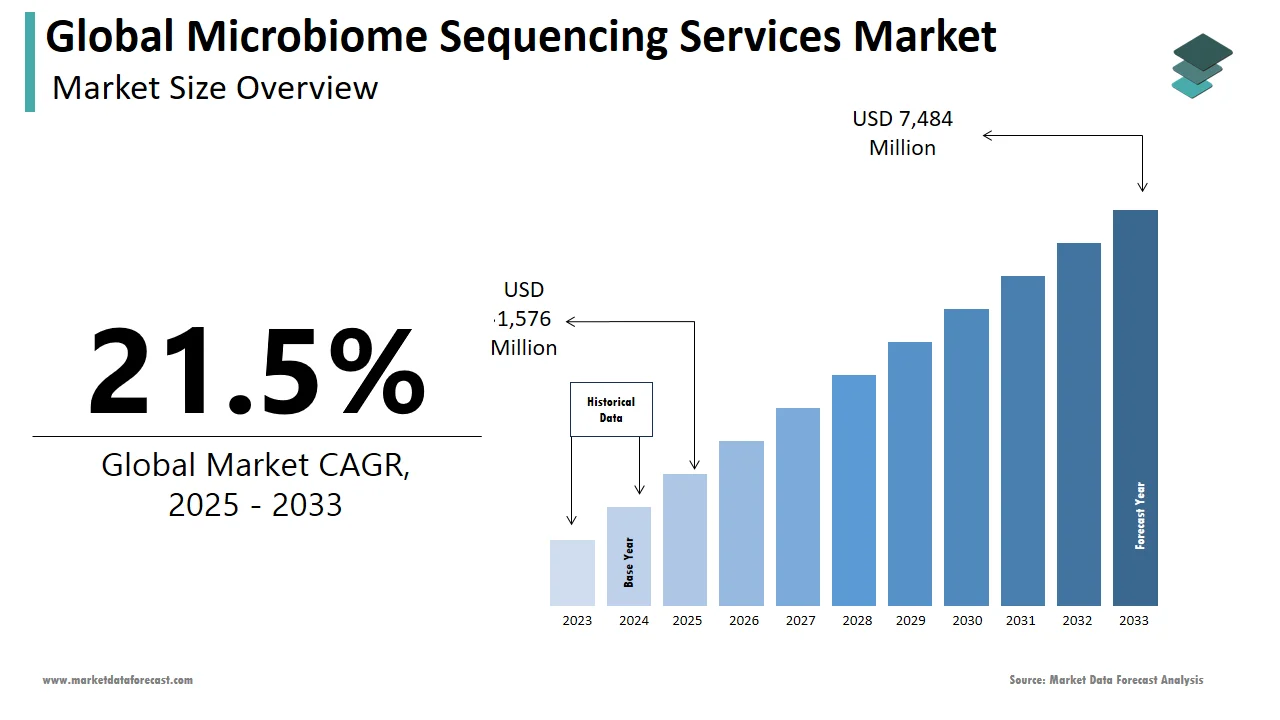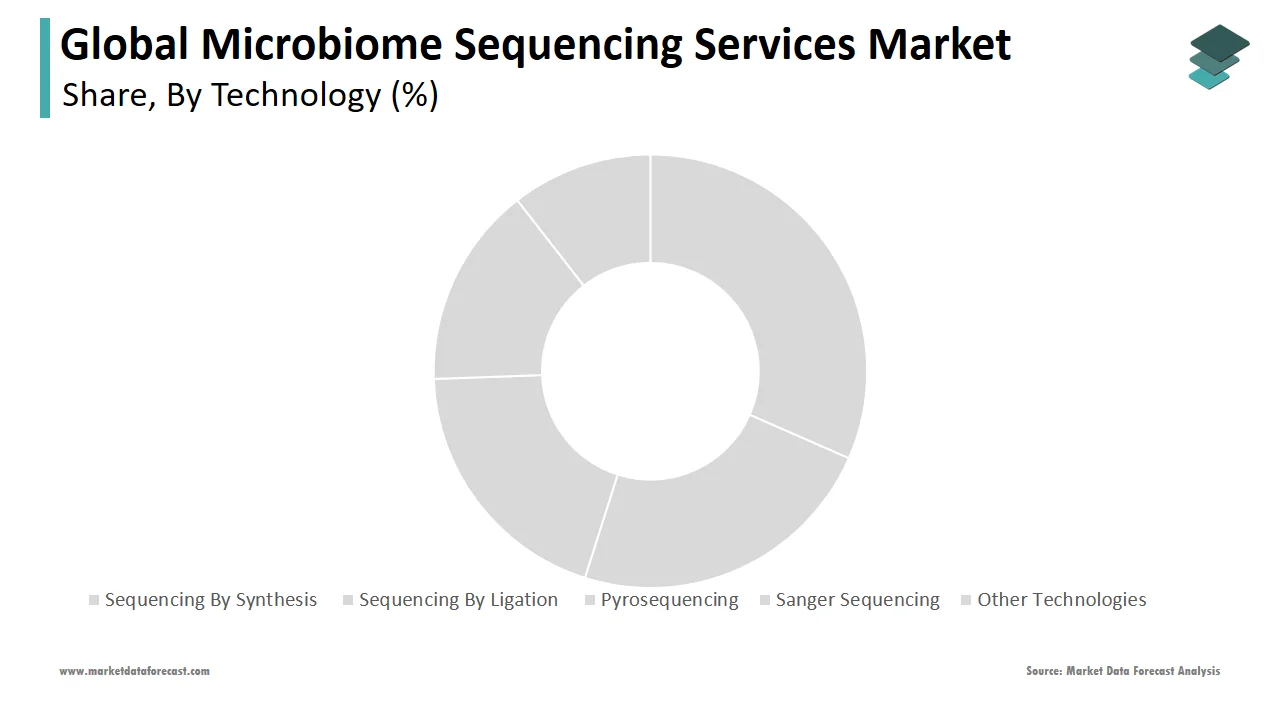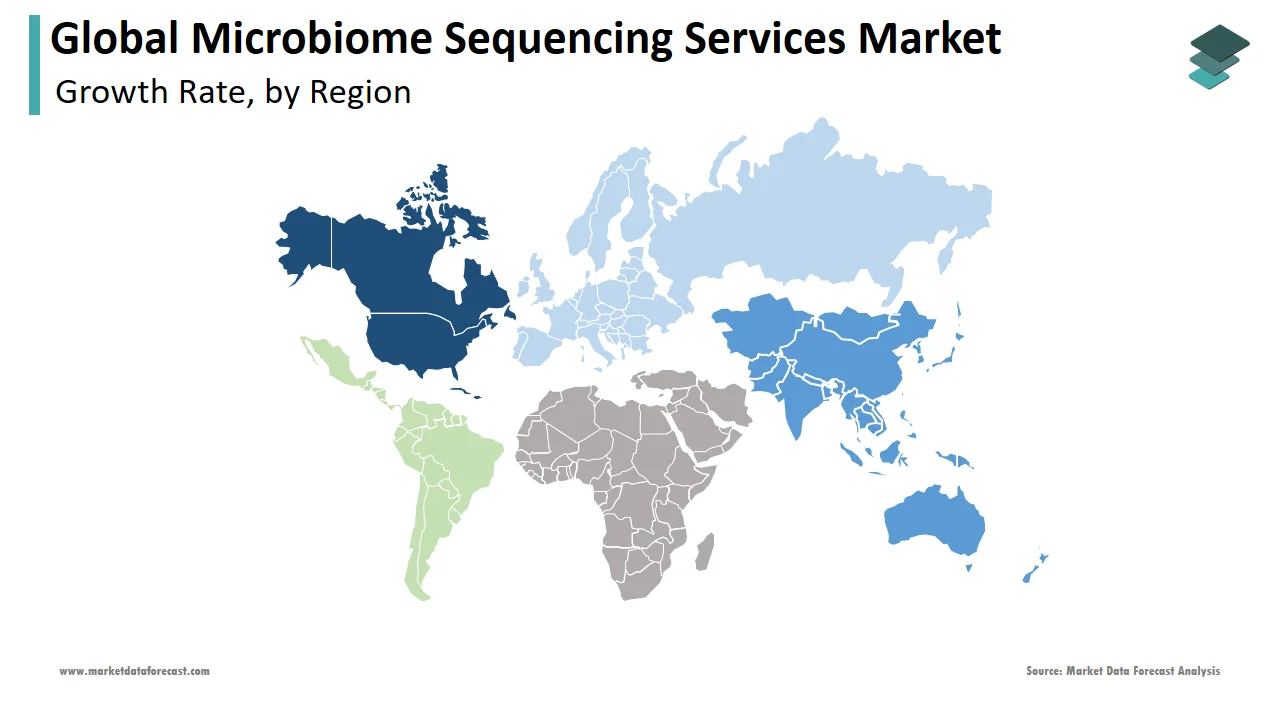Global Microbiome Sequencing Services Market Size, Share, Trends & Growth Forecast Report By Technology, Application, End User and Region (North America, Europe, Asia-Pacific, Latin America, Middle East and Africa), Industry Analysis From 2025 To 2033.
Global Microbiome Sequencing Services Market Size
The global microbiome sequencing services market was worth US$ 1,297 million in 2024 and is anticipated to reach a valuation of US$ 7,484 million by 2033 from US$ 1,576 million in 2025, and it is predicted to register a CAGR of 21.5% during the forecast period 2025-2033.

Microbiome sequencing is used to evaluate the human biodata to understand the illness with different methods. Microbiome sequencing service can help to diagnose & treat chronic diseases. USFDA plays a vital role in the microbiome sequencing service market; they take responsibility to deliver safety and efficacy. FDA examines the part of the microbiome in the antimicrobial resistance in humans also in animals.
MARKET DRIVERS
Rising demand for next-generation sequencing, expansion of microbiome sequencing service application, and reduction in the cost of Sequencing are the factors driving the global microbiome sequencing services market growth.
The increasing scale of pharmaceutical industries, growing awareness, and benefits of microbiome sequencing for cancer treatment are fuelling the market. The rise in the incidences of chronic diseases is significantly influencing the demand of the market. The growth of the global microbiome sequencing services market is further driven by the rise in the research and development institutes in the biological field, growing studies over genomics, and increasing incidences of chronic diseases.Additionally, increasing spending on health care in urban areas and growing support from the government through investments fuel the demand for the microbiome sequencing services market. Also, rising priority for early diagnosis as some diseases may have a complete cure when diagnosed at the starting stage drives the demand for the market.
MARKET RESTRAINTS
The lack of skilled persons in operating systems is the biggest challenge hampering the global microbiome sequencing services market growth.
Stringent rules and regulations by the government and the cost for installing and maintaining the equipment is a little high. These are further expected to limit the growth of the global microbiome sequencing services market. Lack of innovation with intensive analysis can hamper the market growth. The smaller number of technicians, physicians, and scientists is slowly limiting the market's growth rate. The high of equipment in laboratories is also impeding the growth rate of the microbiome sequencing services market.
COVID-19 Impact on Microbiome Sequencing Services Market
Coronavirus disease 2019 (COVID-19) is caused by the coronavirus 2 (SARS-CoV-2) of the extreme acute respiratory syndrome (SARS) and has resulted in a global pandemic as well as restrictions on public and private life. Microbiome sequencing is a technique for studying the microflora of human biota to obtain a good understanding of human microbes and their roles in health and disease. The commercialization of personalized medicine and diet will be helped by a better understanding and implementation of microbiome sequencing services. Clinical researchers are interested in the microbiomes associated with upper respiratory tract infections, chronic obstructive pulmonary disease (COPD), and COVID-19 diseases. The microbiome diversity profiles and associated microbial genomic features discovered in COVID-19 and non-COVID (COPD and URTI) samples could be useful in developing microbiome-based diagnostics and therapeutics for COVID-19 and non-COVID respiratory diseases. As a result, clinical trials worldwide have been challenged, with unique consequences for the rapidly emerging microbiome research.
Microbiome sequencing involves genome sequencing of the disease-causing microorganisms, bacteria and other virus. The cells in the infected patients are collected and sent for sequencing to know the genetic behavior of the infecting foreign vectors. COVID-19 is a disease caused by the novel corona virus strains which effect lungs by causing an acute syndrome in the organs causing inflammation of respiratory tract. Due to this, the behavior of the virus has to be studied, for that genome sequencing of the human microbes is necessary. With the help of human microbial sequencing there can be a data bank repository which will further help in research involving personalized health care or for vaccine invention.
Generally, microbiome sequencing is involved mainly in the oncology and pathology domains. In these domains genome sequencing of cancer cells is done to study the behavior. Likewise, due to the ongoing pandemic the virus strains are genetically sequenced for maintaining a data fiduciary that helps in vaccine invention. Hence as the pandemic is disrupting the life in the entire world, microbiome sequencing market is expected to grow a little faster due to the outbreak.
REPORT COVERAGE
|
REPORT METRIC |
DETAILS |
|
Market Size Available |
2024 to 2033 |
|
Base Year |
2024 |
|
Forecast Period |
2025 to 2033 |
|
CAGR |
21.5% |
|
Segments Covered |
By Technology, Application, Research Type, Laboratory Type and End User, and Region. |
|
Various Analyses Covered |
Global, Regional, and country-level analysis; Segment-Level Analysis, DROC; PESTLE Analysis; Porter’s Five Forces Analysis, Competitive Landscape; Analyst Overview of Investment Opportunities |
|
Regions Covered |
North America, Europe, APAC, Latin America, Middle East & Africa |
|
Market Leaders Profiled |
Microbiome Insights Inc., Rancho Biosciences, Zymo Research Corp., Molzym GmbH & Co., Ubiome Inc., Diversigen Inc., Merieux Nutrisciences Corporation, and Molecular Research LP., and Others. |
SEGMENTAL ANALYSIS
By Technology Insights

Based on technology, the Sequencing by synthesis technique is growing at a higher rate from the past few years, and it is to continue the same flow in the forecast period. The adoption of advanced technology is leveling up the growth rate of the market.
By Application Insights
Based on application, the shotgun sequencing application is witnessed in leading dominant shares of the market. Increasing prevalence to ensure effective treatment procedures is magnifying the demand of the business. The shotgun is being quicker and cheaper than any other methods, propelling the market's growth rate.
By Research Type Insights
Based on the research type, the outsourced research drug segment occupies the largest share and grows with the highest CAGR value in the microbiome sequencing services market.
By Laboratory Type Insights
Based on the laboratory type, the wet lab segment is expected to hold the largest share and grow with the highest CAGR value over the forecast period.
By End-user Insights
Based on end-user, the pharmaceutical companies are ruling revenue shares of the market. The growing number of healthcare centers is prompting the growth of the market extensively. The increase in funds by government and other private organizations for research and development of the market.
REGIONAL ANALYSIS

In 2024, the global microbiome sequencing services market was held by North America due to the rise in the economy in most of the countries. Factors like funds and investments from the government and advanced technologies, and increasing research activities are majorly propelling the market growth. The U.S. is the leading nation of this region due to government research in genomics and different government bodies.
The Asia Pacific is positioned second in leading the highest shares of the market due to innovative techniques in diagnosing the disease. Asia-Pacific is the quickest growing region with a high CAGR value for the next coming years. The growth of this region is attributed due to steady developments of sequencing technologies and the launch of new techniques for diagnosing diseases.
The European region is expected to showcase promising growth during the forecast period with the rise in the number of genetic disorders. Increasing preference for self-medication is leveling up the growth of the market. This region's growth is attributed to the rising usage of micro-biomes in genomics, proteomics, and metabolomics. Also, factors like the non-appearance of adequate regulations, government directions are hampering the growth. U.K and Germany are dominating with the highest shares of the market. The existence of significant players and growing awareness towards NGS are vital factors boosting up the growth rate.
Latin America region has steady growth in the market share than other microbiome sequencing services market areas. The increase in this region is attributed due to a rise in support from the government through investments.
At the same time, Middle East & Africa has also got a meager share of the microbiome sequencing services market. On-going research and development activities on genomic and growing occurrences of chronic diseases are estimated to fuel the market growth.
KEY MARKET PLAYERS
Some of the prominent companies dominating the Global Microbiome Sequencing Services Market profiled in the report are Microbiome Insights Inc., Rancho Biosciences, Zymo Research Corp., Molzym GmbH & Co., Ubiome Inc., Diversigen Inc., Merieux Nutrisciences Corporation, and Molecular Research LP.
RECENT MARKET DEVELOPMENTS
- In January 2019, Ora Sure technologies, Inc. announced the acquisition of CoreBiome. CoreBiome bioinformatics platform benefits the researcher with a high resolution of DNA Sequencing by thousands of microbiome samples.
- In August 2019, Cr, Hansen Holding A/S signed the agreement with Lonza AG, a leading pharmaceutical company of contract manufacturing. This joint venture leads to develop biotherapeutic products.
- In September 2018, Prescient Medicine Holdings, LLC & Metabiomics Corporation announced the joint venture to develop an innovative microbiome diagnosis platform. It can detect precancerous colon Polyps & diagnosing types of gastrointestinal diseases. This technique is specially designed for healthcare practitioners.
- In June 2018, CooreBiome launched the shotgun metagenomically. This new service gives high-quality gene profiling for human microbiome deep characterization. Shotgun sequencing starts in-depth with 2 million sequences/sample.
MARKET SEGMENTATION
This research report on the global microbiome sequencing services market has been segmented based on the technology, application, research type, laboratory type, and end-user.
By Technology
- Sequencing By Synthesis
- Sequencing By Ligation
- Pyrosequencing
- Sanger Sequencing
- Other Technologies
By Application
- Shotgun Sequencing
- Targeted Gene Sequencing
- RNA Sequencing
- Whole Genome Sequencing
- Other Applications
By Research type
- Internal Research
- Outsourced Research Drug
By Laboratory type
- Wet lab
- Dry lab
By End-user
- Pharmaceutical
- Biotechnology
By Region
- North America
- Europe
- Asia-Pacific
- Latin America
- The Middle East and Africa
Related Reports
Access the study in MULTIPLE FORMATS
Purchase options starting from
$ 2500
Didn’t find what you’re looking for?
TALK TO OUR ANALYST TEAM
Need something within your budget?
NO WORRIES! WE GOT YOU COVERED!
Call us on: +1 888 702 9696 (U.S Toll Free)
Write to us: sales@marketdataforecast.com
